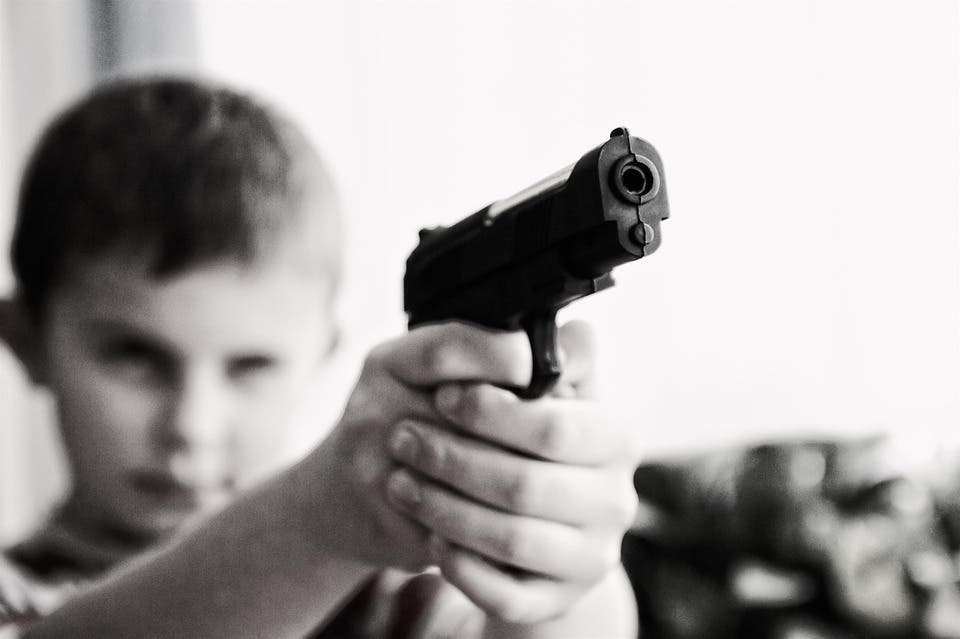Just days after another deadly shooting in an elementary school in the US, health experts are highlighting that guns are now the leading cause of death for children and adolescents 0-19 years old across the country — with a shocking 83% increase in youth firearm deaths over the past decade.

Nineteen children and two teachers were killed this week in a shooting massacre in Uvalde, Texas. It was the second-deadliest school shooting in U.S. history and prompted calls for urgent action to reduce such deaths. However, few issues are as politically polarized in the US as gun policy, with most proposals lacking bipartisan support.
A recent national survey by Pew Research Center showed that 73% of Democrats consider gun violence to be a very big problem for the country, compared with 18% of Republicans who say the same. This partisan gap is even growing too — divisions on guns have been growing steadily since 2016, and America’s youth are paying the price. With partisans unlikely to stop gun policy regardless how many shootings happen, finding solutions is not easy.
“We must reverse this deeply troubling and unacceptable trend in youth firearm fatalities, especially among youth of color,” physician Karen Sheehan, co-author of the commentary piece, said in a statement. “We need more funding allocated to research-based prevention efforts so that we can save young lives before it’s too late.”
The situation has gotten so bad that firearms have become the leading cause of death among young people in the US. There’s an increase in firearm fatalities (83% since 2013) and a decrease in motor vehicle deaths (51% since 2000), the authors wrote. This hike in firearm deaths is due to more firearm homicides, as 60% of firearm deaths among youth since 2010 were homicides. While firearm fatalities started to increase in 2014, the authors argue that the “societal upheaval of the pandemic” likely accelerated the increase with the decline of wellbeing and escalation of mental health stressors. Changes in youth’s lives during the pandemic happened after a long void of prevention efforts to decrease firearm deaths, they added.
“The foundations for firearm injury prevention are only beginning to be established, which contrasts with other instituted injury prevention systems,” they wrote. “Motor vehicle injury prevention has an infrastructure and has led to large decreases in deaths. For firearms, the absence of an intentional and methodical public health approach has led to the opposite results.”
Looking closer at recent statistics, there are also big racial and ethnic disparities when it comes to youth gun violence. Black, non-Hispanic youth (15-19 years old) had a 40% increase in firearm fatalities between 2019 and 2020. Only in 2020, Black adolescents died from firearm homicide at a rate 21 times higher than for While adolescents, based on the latest CDC data.
In their commentary published in The Lancet, the authors argue that these racial disparities “are rooted in poverty and structural and cultural racism” in the US. This then leads to a “biased perception of firearm-related violence in minoritized population” and also reduces the sense of urgency of the problem, they added, calling for further action by policymakers to tackle the issue.
A crucial piece for prevention is robust data systems for firearm injuries and deaths, they argue. Surveillance for non-fatal firearm injuries began in 2020 in ten states with funding from the CDC. Better use of these data systems could make a difference but increased research funding is needed to advance scientific understanding of firearm injury prevention, they added.
“In addition to better understanding the risk and protective factors for firearm injuries and deaths, more funding is essential to develop, implement, and evaluate firearm injury prevention interventions at the individual, hospital, community, and policy levels,” said co-author Samaa Kemal in a statement.
The commentary was published in the journal The Lancet.






